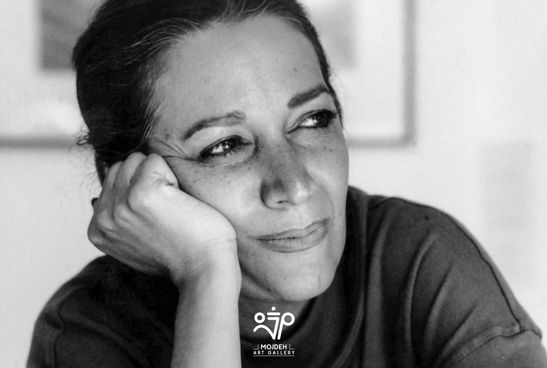Massoud Arabshahi

Massoud Arabshahi was born in Tehran in 1935. Like many of his contemporary modernist painters, he graduated from the School of Decorative Arts and was a student of Hossein Kazemi and Shokouh Riazi. In addition to painting, he was also active in creating structures with clay and plaster, interior design and ceramics. Arabshahi held his first solo exhibition in 1964, which established him as one of the followers of the Saqqakhaneh School, a movement that sought to bridge the gap between ancient Iranian art and modern global art. Unlike other Saqqakhaneh painters, Arabshahi showed more interest in pre-Islamic Iranian art and literature, which was evident in many of his work. The materials and supports used in Arabshahi's paintings were incredibly diverse, influenced by his academic background in interior architecture: wood, aluminum, canvas, clay, plaster, thread, and more. These supports and techniques are as important as the content of Arabshahi's works. Given Arabshahi's deep influence from ancient Iranian motifs and literature, particularly Avestan literature, in 1978, Firuz Shirvanlu, under the supervision of the artist himself, published a book titled "Avesta". This book was quadrilingual, with each Avestan text corresponding to one of Arabshahi's paintings, thus linking the literary narrative with the artistic narrative. It's worth noting that this book was verified against the original text by the late Dr. Bahman Sarkarati, a professor of Avestan language, making it a research-oriented, specialized, and artistic endeavor. This book remains one of the few examples of a connection between art and narrative, both at the time of its publication and today. In the years following the revolution, Arabshahi spent some time abroad and returned to Iran in the 1990s.Alongside his painting exhibitions, he engaged in creating structures and reliefs that are now considered some of Tehran's most significant artistic works. Massoud Arabshahi's perspective on structures and the materials used in them seems to be directly influenced by the bas-reliefs and inscriptions of ancient Iran. Arabshahi drew inspiration from these structures, incorporating Eastern imagery into his works, but his style of expression aligns with modern global art. It is worth noting that while the narrative level of Arabshahi's paintings may be reminiscent of abstract art, the use of mathematical and geometric elements, a combination of colors and materials, the creation of a central element for expression (such as the Faravahar symbol in some works), and various signs and symbols derived from ancient motifs, results in a type of narrative that is neither purely abstract nor figurative.
Sohrab Ahmadi


